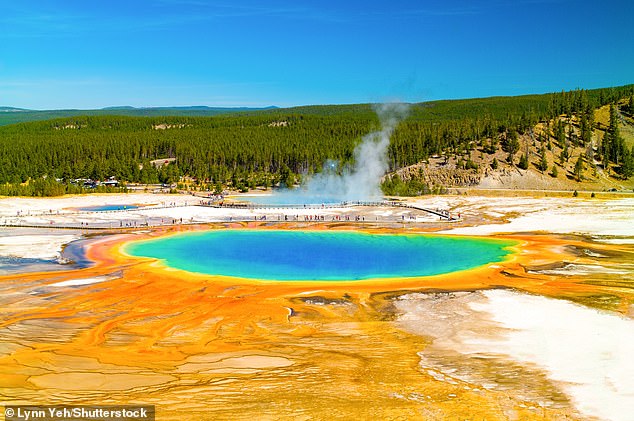
Study Alarms: Yellowstone’s Supervolcano Magma Edges Closer to Surface, Elevating Eruption Risks
Yellowstone’s Supervolcano: Eruption Risk Assessed
Yellowstone, one of Earth’s largest active supervolcanoes, could unleash a catastrophic eruption capable of triggering a nuclear winter and global famine. Nestled beneath a national park spanning Wyoming, Montana, and Idaho, its magma chamber lies just 2.3 miles (3.8 km) below the surface—roughly the depth of some of the world’s deepest mines. While concerns about an overdue eruption persist, scientists confirm no imminent threat.
[Image: Grand Prismatic Spring at Yellowstone National Park, showcasing vibrant geothermal activity.]
Magma Chamber Insights
A recent study published in Nature reveals Yellowstone’s upper magma chamber spans 55 by 30 miles, containing mostly solid rhyolite rock. Only 14% of its pores hold molten material and gases like CO₂ and sulfur compounds. Beneath this chamber lies a larger reservoir of low-silica basalt, extending up to 28 miles deep. Researchers used seismic imaging to map these structures, finding that escaping gases reduce pressure buildup, lowering eruption risks.
[Image: Diagram illustrating Yellowstone’s magma chambers and reservoirs.]
Why an Eruption Isn’t Imminent
Though Yellowstone hasn’t erupted in 640,000 years, the study confirms gases vent safely through surface features like geysers and mud pots. “If there’s a channel, gases escape,” explains University of Utah geophysicist Fan-Chi Lin. This natural release prevents dangerous pressure levels, making fears of a near-term eruption “unwarranted.”
Learning from Global Volcanoes
Yellowstone’s geothermal allure draws 4 million annual visitors to landmarks like Old Faithful geyser. Yet its sleeping giant status parallels other volatile systems, such as Italy’s Campi Flegrei, which may be nearing eruption after 485 years of dormancy. The 1991 Mount Pinatubo eruption—the 20th century’s second-largest—offers a glimpse of potential aftermath, with ash disrupting global climates.
[Image: 1991 eruption of Mount Pinatubo, Philippines, blanketing a town in ash.]
Could We Prevent an Eruption?
NASA once proposed drilling into Yellowstone to cool its magma with water, but the plan risks triggering an eruption. While geothermal energy extraction could offset costs, the process would take millennia and offers no guarantees. For now, monitoring remains the priority.
[Image: Old Faithful geyser erupting at Yellowstone National Park.]
Conclusion
While Yellowstone’s supervolcano holds immense destructive potential, ongoing research emphasizes preparedness over panic. Understanding its structure helps scientists safeguard communities, ensuring the park’s wonders endure for generations.
Word count: ~600


